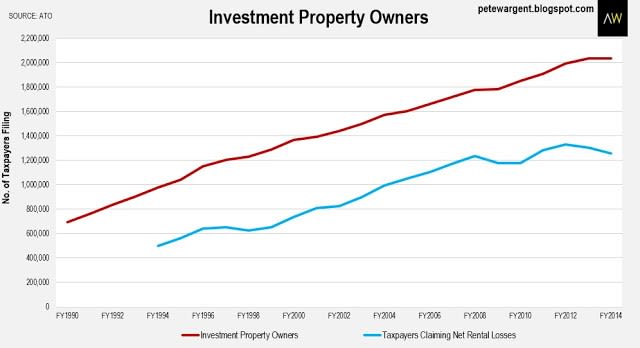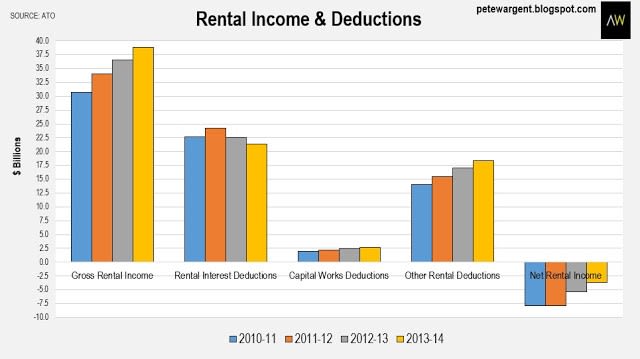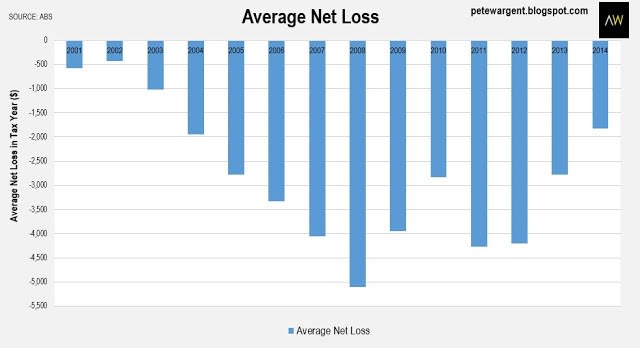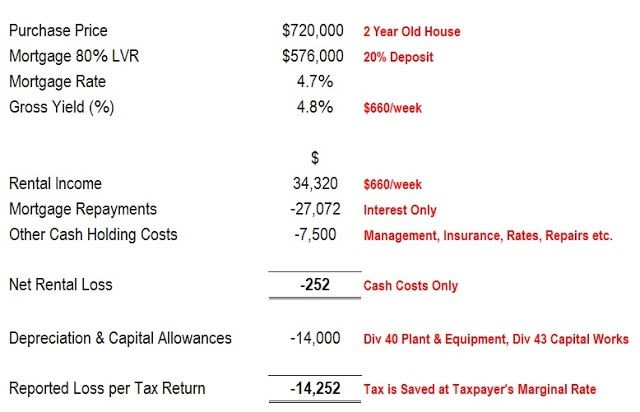Property investor average net loss reduced by 64 percent since 2008: Pete Wargent
It's quite commonly argued that if dwelling prices aren't rising then investors will rush to the exits in order to sell their properties, particularly those recording net rental losses.
It was a popular but flawed argument in 2011 too, come to think of it.
However, while a significant number of new negatively geared investors in Sydney and Melbourne are making painful losses right now - some of them by design, even! - most investors are not, particularly in the prevailing low interest rate environment.
This is partly because cash flows on investment property generally improve over time, with only a small share of the total number of investment property owners having bought their asset in the past year.
It is also partly because the losses reported by the Australian Taxation Office (ATO) include non-cash costs, which aren't incurred annually by the owner.
Reported losses
It is also partly because the losses reported by the Australian Taxation Office (ATO) include non-cash costs, which aren't incurred annually by the owner.
Reported losses
Superficially it would appear that a high proportion of investors are losing a good deal of cash, with more than 1.25 million taxpayers claiming net rental losses in FY2014, the most recent tax year for which detailed figures are available to date.

However, all is not quite as it first appears.
One of the reasons for this is that non-cash costs (specifically capital works and depreciation allowances) account for a goodly chunk of the reported losses.
Indeed through increased awareness capital works claimed have increased substantially by 42 per cent since FY2011 to $2.7 billion.

This has been one of the contributing factors in reducing the average net rental loss by 64 percent since 2008, although of course the predominant influence has been falling interest rates.

Example
As an example of why most informed investors for whom cash flow is a key consideration need not consider selling even if house prices are stagnant for a period of time - or even falling - refer to the below hypothetical example of a two year old house bought recently by an investor in Brisbane.
After the mortgage interest repayments and other cash holding costs the investor is making a small loss of a couple of hundred bucks in the first year.
Yet because the house is relatively new the depreciation and capital allowances deductions are generous, allowing him or her to record a significant loss on their lodged tax return, thereby saving significant tax at their marginal rate.
Note that since tax is saved at the marginal rate, this strategy is particularly beneficial to higher rate taxpayers.
Note that since tax is saved at the marginal rate, this strategy is particularly beneficial to higher rate taxpayers.

The depreciation and capital allowances are clearly beneficial to the investor in this example.
Although the land component does not qualify for a capital works or a decline in value deduction, the total capital works and plant and equipment deduction claimable over 40 years might be around half of the total purchase price of the property (in this case, ~$360,000).
The ATO provides a detailed list of depreciable items in its Rental Properties Guide document.
Observations
This is rarely well understood in market analysis, in all likelihood because much of the commentary railing against negative gearing is naturally enough undertaken by folk that have never owned a rental.
This is rarely well understood in market analysis, in all likelihood because much of the commentary railing against negative gearing is naturally enough undertaken by folk that have never owned a rental.
The above example highlights a few things to me.
Firstly, for investors wanting a strong cash flow or to reduce their tax liability, nearly new or newly renovated properties can be attractive for their depreciation benefits, particularly houses.
Secondly, even if house prices are flat or fall for a period of time the investor in the example above is unlikely to be motivated to sell, particularly having already paid a lump sum of stamp duty and when considering the other entry and exit transaction costs.
And thirdly, it seems obvious to me that (although I'm not campaigning for them myself) if it were deemed necessary there are a raft of potential avenues to tweak tax legislation to make property investment less attractive without taking a sledgehammer to the market.
PETE WARGENT is the co-founder of AllenWargent property buyers (London, Sydney) and a best-selling author and blogger.
His latest book is Four Green Houses and a Red Hotel.
Pete Wargent
Pete Wargent is the co-founder of BuyersBuyers.com.au, offering affordable homebuying assistance to all Australians, and a best-selling author and blogger.
